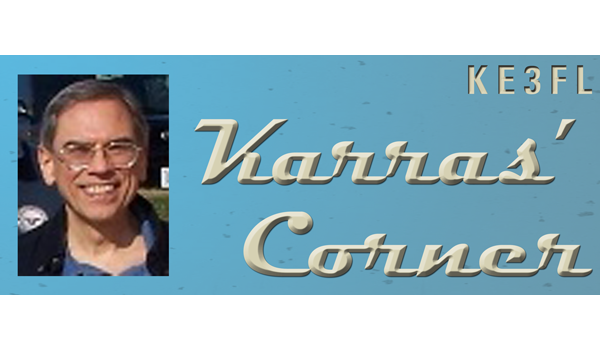Antennas Tested:
Homebrew 8″ and 16-7/8″ (Called 17″)
Manufactured: Quad 6″ bowties with reflector
Extra: Two loops used as a dipole, like the bowties are used.
The 16 and 7/8″ bowtie is as close as I could come to the length for a dipole for Channel 7 the lowest frequency and the longest wavelength of the TV channels I receive.
Using the Channels vs Frequency list at:
https://otadtv.com/frequency/index.html
and then the wavelength vs frequency calculator on my website:
http://cs.yrex.com/ke3fl/prgms/FreqVsWaveLength.htm
Channel 7 is the lowest frequency at: 174 MHz, which gives a 1/2-dipole length of: 33.9″ or 0.862m, which, for each half of the dipole is 16.97″ or 0.431 m. The high end of Channel 7’s frequency band is 180 MHz for a 1/2-dipole length of 32.8 in., or each half is 16.4 inches. So the longest length bowtie I have is around 16.875 in., much closer to the lowest frequency/longest wavelength (?) of 16.97.” Its length is probably fine for these tests.

Bowtie Diagram
For the complete tests I’ve done on both the lengths and angles of bowtie antennas see my earlier blogs at:
Bow Tie Element Length Evaluation
https://blog.solidsignal.com/tutorials/bow-tie-element-length-evaluation/
and
Bow Tie Antenna Angle Tests
https://blog.solidsignal.com/tutorials/bow-tie-antenna-angle-tests/
This blog is going to be a quick test to see if there is an advantage to making the bowtie longer in order to receive Channel 7 better. It also will look at a four-6″-bowtie antenna and a “new” two-loop dipole antenna I call the “Loops Antenna.” A quick look at the tests done in 2013 say that there will be no advantage to a longer bowtie antenna.

Bowtie Lengths Measured
The tests started with the loop dipole antenna, and then concluded with the same antenna, and last, I included the test of the manufactured Quad bowtie antenna.
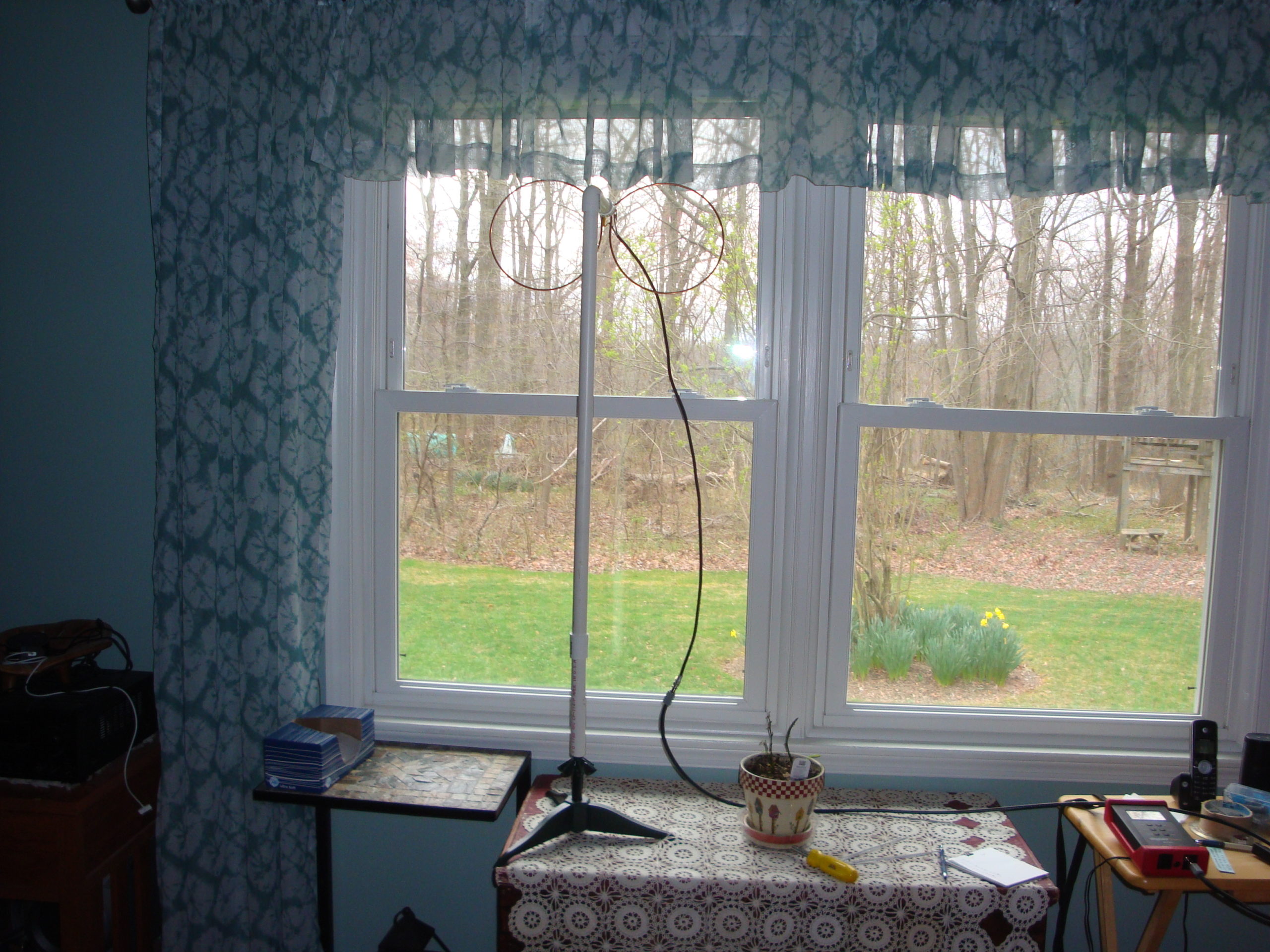
The Loops Antenna
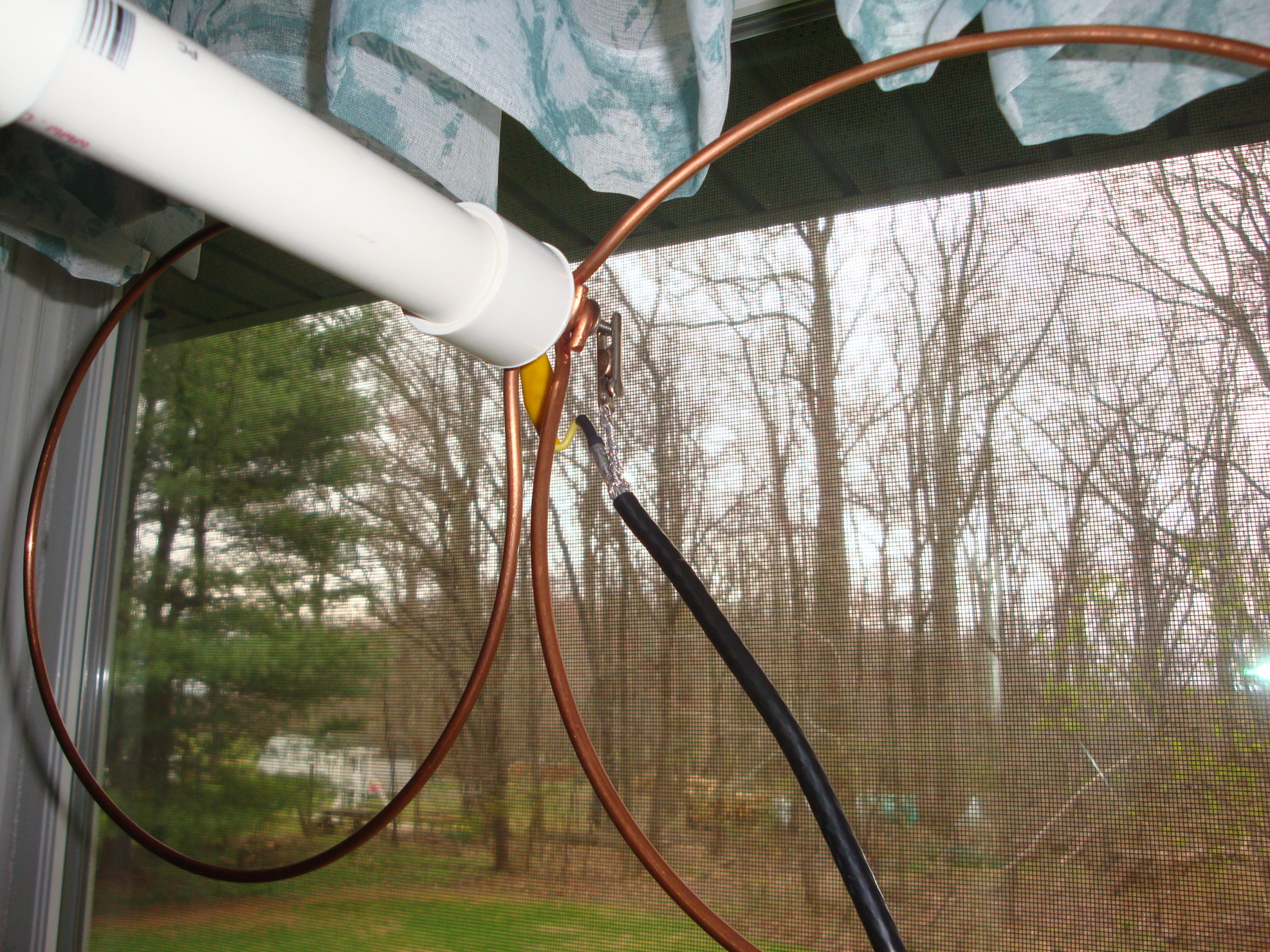
The Loops Antenna Closer
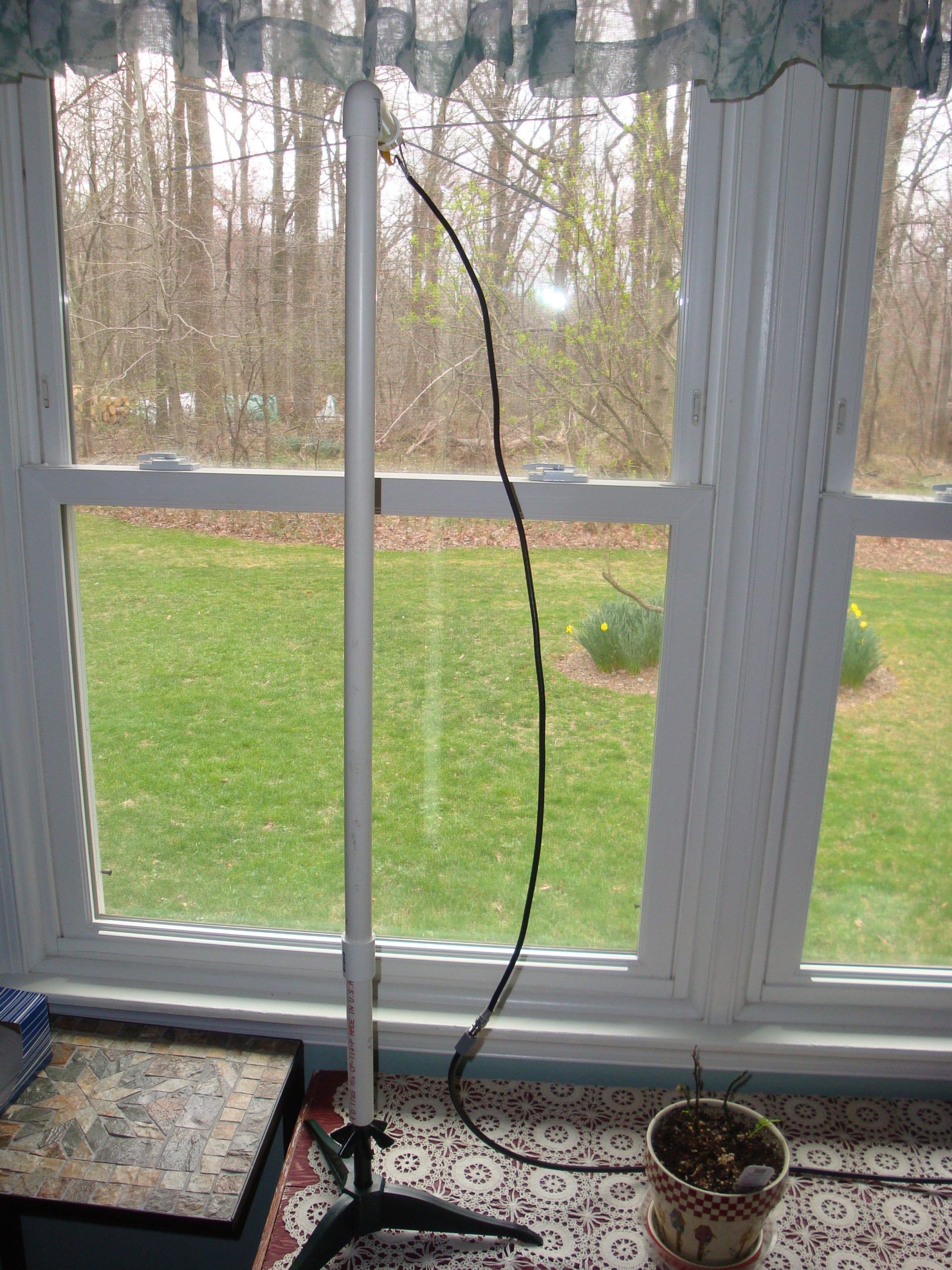
The 8″ Bowtie

The 8″ Bowtie Closer
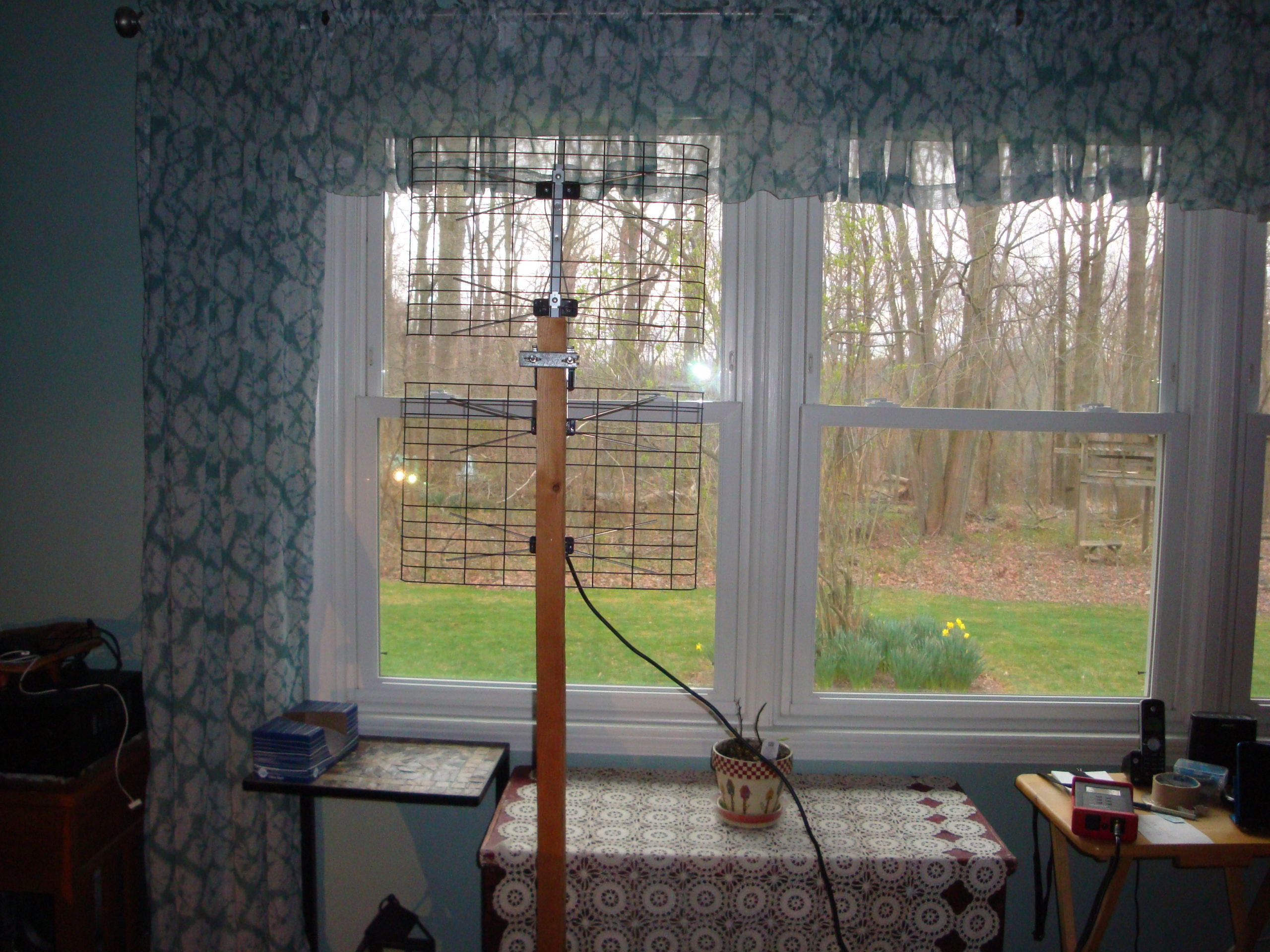
The Quad Bowtie Antenna
The data collected is shown below, values are in dBμV:
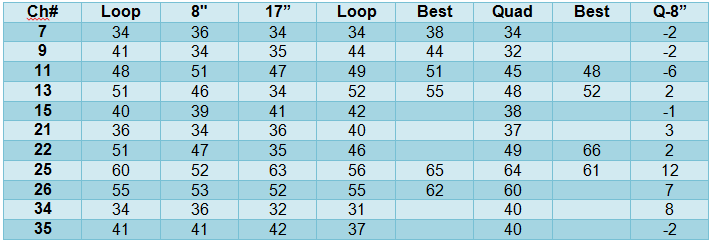
Antenna dBμV Data Table
Q-8″ means Quad value – the 8″ bowtie value, negative means the 8″ bowtie was better by that many dB. Positive value means the quad bowtie was better than the 8″ bowtie by that many dB.
The data shows quite clearly that a longer bowtie antenna does not have more gain than the 8″ bowtie for the VHF stations. There was only one station – Ch 25 – where the longer bowtie had a substantial advantage of 11 dB. All other stations were better or worse by about 2 dB. I was hoping for improvement but there was actually a loss. For the four VHF stations, the 8″ bowtie was much better for two at 4 dB and 12 dB. It was better on another station by 2 dB and worse on channel 9 by 1 dB. Only on channel 9 was the 17″ bowtie a little better, and it was substantially worse on two VHF stations. My conclusion is to stick with the 8″ bowtie since a longer bowtie does not seem to help. Only on Channel 25 was the longer bowtie substantially better by 11 dB. On all other channels, it was either within 2 dB or less difference (a wash) or worse.
The Loop antenna was a modified “Penny Loop” antenna. Another antenna experimenter came up with the Penny Loop design, which was simply two 8″ ID loops tied together vertically and when I tested it, the results were much the same my standard 8″ bowtie. However, changing the Penny Loop design to be first horizontal and then also like a bowtie and dipole just two wider elements – loops instead of a V on its side as for the bowtie – gave some interesting improvements. You can look up on Instructables how to build a Penny Loop antenna. Link: https://www.instructables.com/id/Build-the-Pennyloop-UHF-Antenna/
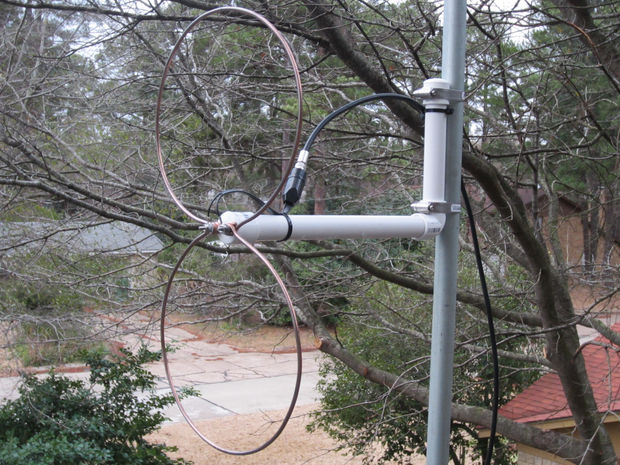
Image 6: The Original Penny Loop Antenna
Notice that the penny loop antenna is one big loop of wire shaped like a figure eight. I changed it to horizontal orientation and I separated it into two loops like a very wide dipole antenna.
A bowtie in much easier to make than a loops type antenna but wait, we may find a quicker way to do this in my next blog. I’m looking forward to testing easy to come by house-hold objects as TV antennas for Emergency TV Antennas.
Looking at the 8″ bowtie, we have three stations at 50 dB or better: Chs 11, 25, and 26. The 17″ version has only two, Chs 25 and 26. The Loop antenna has three Channels 13, 25, and 26. Being able to rotate either the bowtie or the loop antenna can bring in a few other stations as well.
The “best” columns are when I tried to aim the antenna a bit more to the east or west to see if there was any advantage. I then watched the signal strength to see if it increased or decreased. I selected the spot that gave the highest power. I suspect that the bowtie antennas would do better if rotated as well.
Looking at the Quad antenna data, the first thing I noticed was that it is not 6 dB better than a single 8″ bowtie for every channel, but it is better on many of the channels. If we discount the channels from 11 to 7, where the 8″ bowtie is better for two of the three stations, we see that the quad is better on six out of eight UHF stations by four dB or more. Again, being able to rotate this antenna will probably bring even more improvement than a single bowtie.
As expected, the Quad-Bowtie antenna did not do very well for the VHF stations. The bowtie antenna was designed for the UHF stations. Even increasing the length of the bowtie does not seem to help like as it does for a dipole for improving the VHF stations. Also, even increasing the length of the dipole was only much better when the length was increased to 3/2-λ.
Summary:
- The 8″ bowtie is easier to make and works as well and better than a longer version, like the 16 – 17″ version.
- A new Loops, 8″ diameter, dipole seems to have some interesting advantages over the bowtie antenna and I want to look into this further.
- The quad bowtie antenna had some expected improvements but not all.
Until next time, Happy OTA DTV viewing!
All my blog articles are listed at: Karras’ Corner
https://blog.solidsignal.com/author/philk/
or
Karras’ Corner Article Links
http://cs.yrex.com/ke3fl/KarrasCorner.htm
on my KE3FL web site.

